Plagiarism in Pop Culture: The Goldbergs
I'm confused, which one is Bill Goldberg?
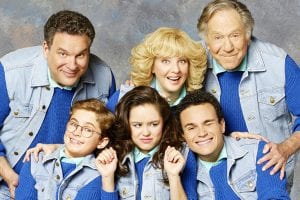
In this series we focus on television shows (and soon other pop culture formats) that have featured plagiarism as a plot device.
However, for most of the series, we’ve focused on shows that are not recent. Whether it’s Leave it to Beaver from the 50s, Star Trek in the 60s, The Waltons in the 70s or WKRP in Cincinnati in the 80s or Boy Meets World in the 90s, the series has been as much a retrospective as it has been an analysis.
But this time we get to do something a little bit different. We get to look at not just a recent episode, but an episode that aired just a week before.
That’s thanks to the ABC sitcom The Goldbergs, which featured plagiarism prominently in a recent episode.
The series, which began in 2013 and is currently in its fifth season, focuses on the Goldberg family during the 1980s. Viewed through the prism of the family’s youngest son, Adam, the series tells the tale of Adam, his two older siblings, their parents and their grandfather.
However, in episode 2 of season 5, entitled Hogan is my Grandfather, Adam’s story took a detour into plagiarism as he found himself accused of plagiarizing a video essay and threatened with expulsion from school.
But what makes the accusation more interesting is that Adam wasn’t the plagiarist at all…
Note: Episode spoilers below…
The Plot
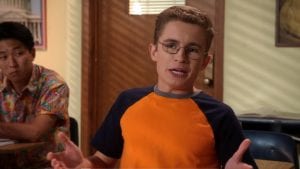
The episode began with Adam discussing how, when he was growing up, he was one of the few kids who had access to a camcorder. As such, he often used that camcorder (combined with his passion for filmmaking) to turn in video projects instead of essays for class.
However, when he attempts the same tactic with his history teacher, whom Adam describes as “rough around the edges,” he’s met with skepticism. The teacher pushes back against Adam and insists that he’s just trying to get out of work. Adam upsells, promising an amazing documentary on World War 2. This gets his teacher to go along with the idea, but only with the caveat that Adam has to “wow” him or he’ll get an F.
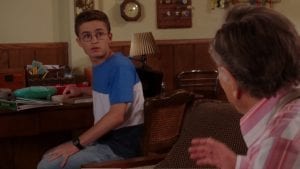
Adam then talks to his grandfather (Pops) to try and get some of his stories from the war. However, though Pops served in the war, it was on cargo ships where little happened. Dejected, Adam says he’ll look elsewhere for stories to film but Pops then decides to invent new stories about his time in the war, all of which were based on episodes of Hogan’s Heroes.
Unfortunately for Adam, the plagiarism was extremely obvious and his teacher caught the similarities even before Adam had finished showing his video to the class. Accused of plagiarism, Adam was hauled to the principal’s office where the teacher played side-by-side clips of Adam’s video and an episode of Hogan’s Heroes, further proving the point.
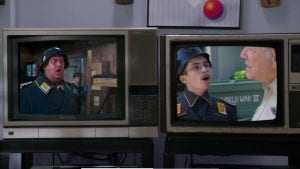
Despite the evidence, Adam refused to accept that his grandfather had lied to him, even going so far as to accuse Hogan’s Heroes of plagiarism. However, when confronted by Adam, Pops quickly admitted to lying saying he didn’t know the video was for school and that he just wanted to spend more time with.
Pops then went to the school to explain the situation to the teacher. Though initially resistant, the teacher agreed to let Adam redo the assignment, which he did with Pops true stories from the war.
Moved by the new documentary, the teacher tearfully gave Adam an A+, bringing the story to a close.
Understanding the Plagiarism
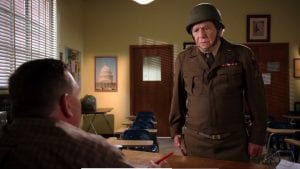
This plagiarism story is a bit different than the other ones we’ve discussed. Adam genuinely had no idea he was plagiarizing. He had never seen Hogan’s Heroes, he trusted his grandfather completely and he truly had no idea he was being lied to.
In that respect, Pops is more the plagiarist than Adam, even if Adam faced the consequences for it.
Though comedic in nature, Pops’ reasons for plagiarism are actually fairly common. He didn’t feel that his real stories were interesting enough so he concocted fake ones based on a TV show he knew well.
This is an excellent example of how the lines between plagiarism and fabrication can be blurred and why those who commit one of those sins are more likely to commit the other.
For Adam, the consequences were fairly reasonable. Though being called out in front of the class was inappropriate, being brought before the principal, being faced with severe punishment and risking failing the assignment were all valid responses.
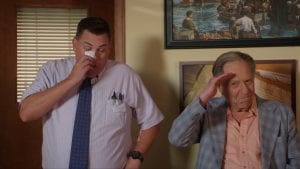
It was also valid for the teacher and the school to drop the issue when it was learned Adam wasn’t to blame. If he was genuinely being fed misinformation from a trusted source, which appears to be the case here, then it is appropriate to give him a second chance.
Even Adam’s response to the news his grandfather lied is also appropriate: He simply didn’t believe it. He even went as far as to argue that Hogan’s Heroes plagiarized Pops rather than the other way around, a surprisingly common reaction when a loved one is accused of plagiarism.
What isn’t appropriate or understandable is the lack of consequences for Pops. For lying to his grandson, getting him in trouble at school, even risking his expulsion, he receives no consequence.
Sure, he’s the one who straightens the situation out, but Adam forgives him almost immediately and he isn’t even strongly scolded by the teacher.
In that regard, the episode is similar to the plagiarism episode of Leave it to Beaver, where the father helps his son plagiarize and receives no significant repercussions other than having to sort the issue out.
Though Adam certainly faced some serious consequences over the plagiarism, the actual plagiarist, Pops, received nothing. Even though his lies endangered his grandson’s education and broke his trust, it was largely written off because his reasons for doing so were sympathetic.
That, in turn, is the most disappointing element of the show, at least from the plagiarism perspective.
Bottom Line
The Goldbergs is a show that, overall, does a great job mixing the serious with the comical. This episode’s other storyline, which dealt with the mother struggling to let go of her two college-aged children, had a surprisingly touching and well-rounded conclusion that involved a highly-relatable coming to terms with difficult change.
However, there was no such coming to terms for the plagiarism plot. There were no heartfelt apologies, character growth and no real consequences for any of this.
While the show did a good job portraying the plagiarism from Adam’s perspective, when looked at from Pops’ perspective the show indicates just how little progress has been made talking about plagiarism since Leave it to Beaver.
While it would be easy to write this off as a limitation of sitcoms, both The Facts of Life and WKRP in Cincinnati did excellent jobs with the topic.
The problem isn’t the format, but rather, the shows that want to have plagiarism as a plot point, but not deal with all of the consequences that would stem from it. In the case of both Leave it to Beaver and The Goldbergs, this is about preserving the more wholesome image of family life.
However, plagiarism isn’t wholesome and it comes with both serious consequences and an emotional toll. Though The Goldbergs talked about the practical consequences, it avoided the emotional and personal ones, painting an incomplete picture of the impacts plagiarism can have.
More Plagiarism in Pop Culture (In Reverse Order)
Want more Plagiarism in Pop Culture? There Are 40 others to check out!
- Ferris Bueller
- Randy Feltface
- Bob’s Burgers
- Columbo (Part 2)
- Columbo (Part 1)
- Death in Paradise (Part 2)
- American Auto
- Saturday Night Live
- The Conners
- Death in Paradise (Part 1)
- Lobachevsky
- Back to School
- The Golden Girls
- Young Sheldon
- The Goldbergs (Part 2)
- King of the Hill (Part 2)
- Yesterday
- King of the Hill (Part 1)
- The Kids Are Alright
- Big Fat Liar
- Coco
- Re-Animator
- Elementary
- Instinct
- Fresh Off the Boat
- The Goldbergs (Part 1)
- Lou Grant
- Star Trek: The Original Series
- Arthur
- Criminal Minds
- Mystery Science Theater 3000
- Cheers
- WKRP in Cincinnati
- Boy Meets World
- Law & Order: Criminal Intent (Part 2)
- Law & Order: Criminal Intent (Part 1)
- Jane the Virgin
- The Waltons
- Leave it to Beaver
- The Facts of Life
Want to Reuse or Republish this Content?
If you want to feature this article in your site, classroom or elsewhere, just let us know! We usually grant permission within 24 hours.
